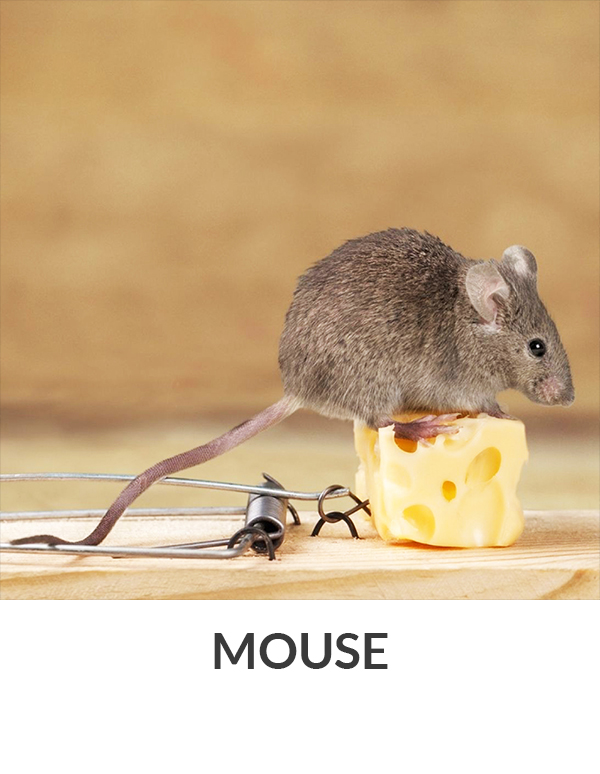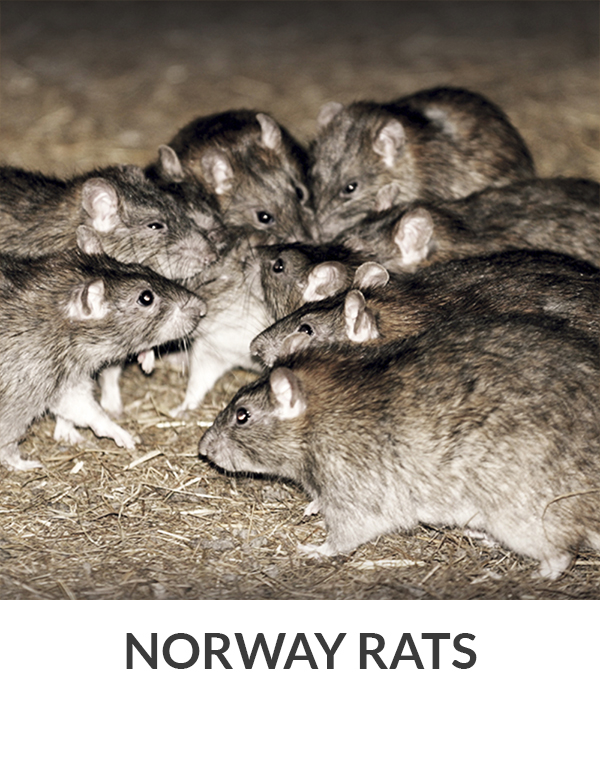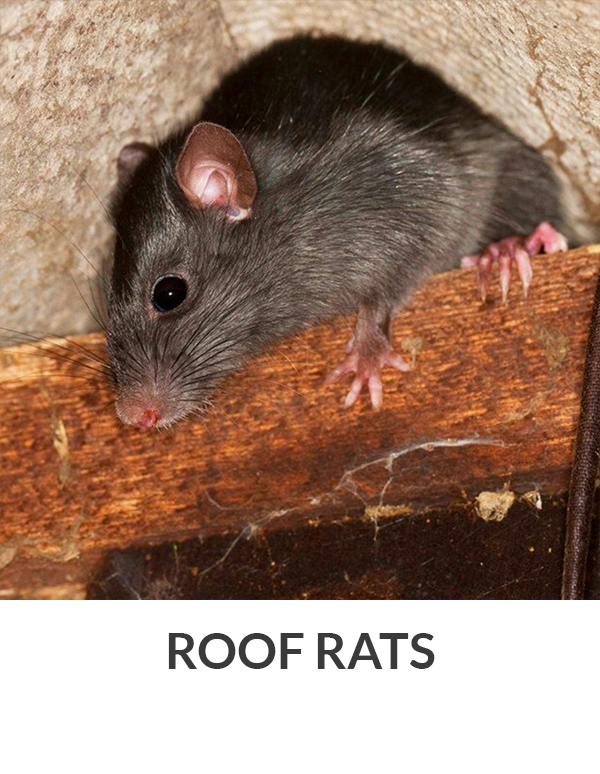
Rodents
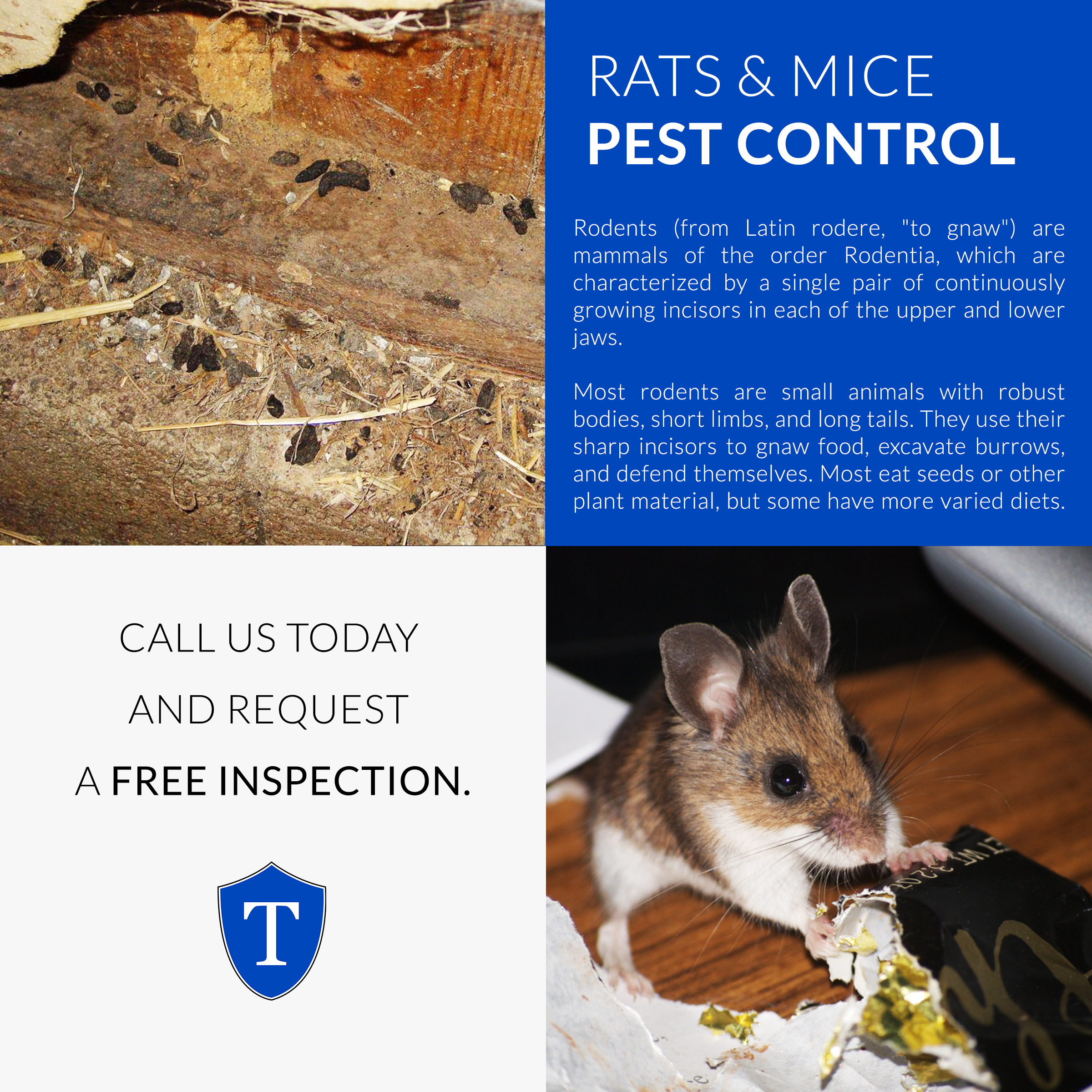
Rats and mice can be detected by their droppings or evidence of gnawing and rub marks; their tracks can be seen in the mud and on dusty surfaces. Burrows and runways can be found near buildings, by creek beds and drainage ditches as well as along fences and under low vegetation and debris.
Rats are typically distinguished from mice by their size. Generally, when someone discovers a large rodent, its common name includes the term rat, while if it is smaller, its name includes the term mouse. Rats are various medium-sized, long-tailed rodents. Species of rats are found throughout the order Rodentia, but stereotypical rats are found in the genus Rattus.
The 3 most common rodents in California are the House Mice, Norway and Roof Rats.
-
House Mice
House mice are typically dusty gray with cream-colored bellies. Fur color varies from light brown to dark gray depending on the mouse’s location. House mice have four legs and a round shaped body. Their muzzles are pointed, and their ears are large with some hair. House mice range from 2.5 to 3.75 inches long. Their tails are usually 2.75 to 4 inches long. In nature, mice prefer to eat cereal and seeds, but they will also eat insects, nuts and fruits. Inside structures, mice will consume almost any human food, but prefer grain based products. They breed rapidly and can adapt quickly to changing conditions. In fact, a female house mouse can give birth to a half dozen babies every three weeks and can produce up to 35 young per year.
-
Norway Rats
Norway rats, also called brown rats or sewer rats, are found wherever there are people. They live in burrows they’ve lined with fibrous materials such as paper or cloth. Their burrows are typically found near woodpiles, trash heaps, damp areas in the garden and building foundations. Norway rats aren’t particularly good climbers, so if they get in your house, they usually remain on the ground floor or in the basement. They are recognized by their large size, grayish-brown fur, scaly pink tail, relatively small ears and blunt muzzle.
-
Roof Rats
Roof rats, or black rats, are smaller than Norway rats. Agile climbers, they live in trees, shrubs and dense vegetation. When they get into buildings, they tend to live in ceilings, walls, attics and cabinets. They prefer warm climates and are not found in as many areas as Norway rats. However, the two species do sometimes share the same habitat. Black rats have dark gray fur, gray to white bellies, pointed muzzles, large ears and scaly tails that are longer than the rats body and head combined.
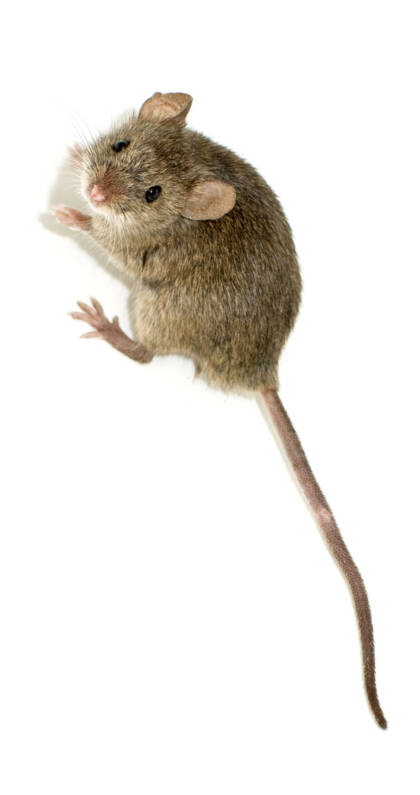
Do you know that rodents can contamine foods, spread disease that can affect humans and liverstock and also damage structures by their gnawing and burrowing?
Especially during the winter months, the encounter with a rodent who has made its way into a home uninvited becomes common. What many people do not realize, however, is that these pests can be much more than a nuisance. Rodents such as rats and mice are associated with a number of health risks. In fact, rats and mice are known to spread more than 35 diseases. These diseases can be spread to humans directly through handling of live or dead rodents, contact with rodent feces, urine, or saliva, as well as rodent bites. Diseases carried by rodents can also be spread to humans indirectly through fleas, ticks, or mites that have fed on an infected rodent. Here are some of the diseases that you can catch: Plague, Salmonellosis, Leptospirosis, Rat-Bite Fever (RBF), Tularemia (Rabbit Fever), Hantavirus Pulmonary Syndrome, Lymphocytic Choriomeningitis (LCM).
To control rodents, in addition of our pest control program, there are some things that can be done to prevent these invaders. Sanitation and exclusion are the two of the biggest factors in preventing further rat infestation problems. Check the list below:
- Trim tree branches at least 5’ from buildings and trim bushes or ground cover 12” back from the foundation;
- Cover vents and screens: They must be all covered and in good repair;
- Seal as many holes and access area, cracks & crevices as possible with steel wool or expansion foam;
- Good sanitation: Will make the environment less hospitable for them to live and thrive;
- Proper storage and handling of food materials and garbage;
- Keep the yard and home free of an overabundance of clutter;
- Always pick up pet food when your pet is done eating;
- Rinse and store recyclable cans and bottles in closed lid containers;
- Decrease feeding of other wildlife such as squirrels and birds, because it became a very easy food source for rodents.
Where usually can we find rodents?


